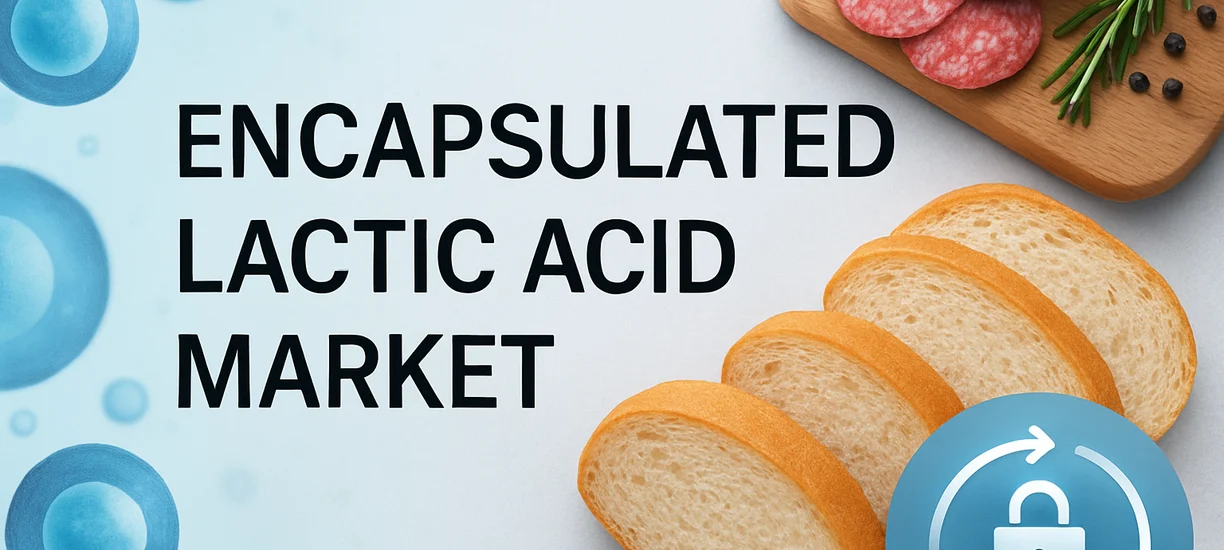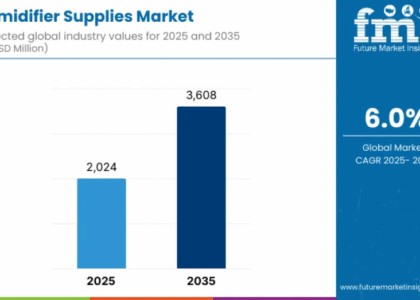The global encapsulated lactic acid market is poised for significant expansion, with its valuation expected to grow from current levels to USD 1,800 million by 2035, advancing at a CAGR of 7.18% from 2025 to 2035. This growth reflects the increasing adoption of advanced formulation technologies across industries including food and beverage, pharmaceuticals, and personal care.
Encapsulated lactic acid, a form of lactic acid coated with a protective shell, enables targeted and controlled release, extended shelf life, and improved functional stability. These benefits have significantly enhanced its usability in clean-label food products, controlled drug delivery systems, and skin care solutions, where preservation, pH control, and slow-release functionalities are critical. This shift from conventional lactic acid toward its encapsulated form reflects a growing demand for high-performance, multifunctional ingredients in consumer products.
In the food and beverage industry, encapsulated lactic acid acts as a pH regulator and antimicrobial agent, improving shelf life without compromising taste. The pharmaceutical sector values its controlled release properties, especially in probiotic formulations and drug delivery systems. In personal care, it’s increasingly found in exfoliating products and pH-adjusting creams, thanks to its gentle and effective profile.
Your Guide to Market Intelligence – Download a Sample Copy: https://www.futuremarketinsights.com/reports/sample/rep-gb-8721
Rising Applications in Meat and Processed Foods
One of the primary use cases fueling demand for encapsulated lactic acid in processed meat formulations is its ability to inhibit microbial growth while delivering a time-release lactic acid effect. This feature ensures that food-grade encapsulated lactic acid remains dormant during production and is activated only during cooking or product consumption, thereby preserving texture, taste, and shelf life.
Meat processors are increasingly turning to encapsulated acidulants for extended shelf life in food, especially in ready-to-eat and ready-to-cook categories. The demand for powdered encapsulated lactic acid for dry food applications has also surged due to its utility in spice mixes, dry marinades, and dehydrated products.
Clean-Label Trends Shaping Consumer Preferences
The movement toward clean-label food ingredient solutions is not just a trend but a defining force in the modern food and beverage sector. Consumers are actively seeking products free from synthetic additives, while still expecting natural food preservation solutions. Functional food additives like encapsulated lactic acid meet these expectations, allowing brands to maintain food integrity without using artificial preservatives.
Encapsulation technology in food has enabled the development of acidulants that release active components at the desired moment, helping manufacturers meet shelf-life requirements while complying with regulatory and clean-label standards.
Controlled-Release Acidulants Gain Traction
Technological advances in encapsulation technology have led to more effective delivery systems, enhancing the performance of controlled-release acidulants in high-heat food processing. This is especially important for ingredient stability in high-heat food processing, where traditional acidulants may degrade or lose effectiveness.
Encapsulated lactic acid applications in dairy and meat products continue to gain momentum as the need for targeted microbial control and extended shelf-life becomes critical across global supply chains.
Country-wise Analysis
United States: The U.S. leads in encapsulated lactic acid applications due to its large-scale processed food and pharmaceutical sectors. Rising demand for shelf-stable, natural ingredients is boosting market uptake.
Canada: Canadian food manufacturers are increasingly turning to encapsulated lactic acid for preservative-free alternatives, particularly in organic and gluten-free food segments.
United Kingdom: In the UK, industrial and cosmetic applications are gaining momentum. The focus on clean beauty and sustainable ingredients supports rising usage in personal care.
Germany: Germany’s strong food processing and nutraceutical sectors are key demand drivers. Encapsulated lactic acid is being adopted in meat preservation and dietary supplements.
China: With rapid expansion in the packaged food sector, China is seeing a surge in demand. Additionally, a growing urban middle-class population is pushing demand for natural cosmetics with encapsulated active ingredients.
Key market players
- BSA Inc.
- Balchem Ingredient Solutions
- Food Ingredient Technology Co., Ltd.
- IFP (Innovative Food Processors), Inc.
- Wiberg Canada
- BASF SE
- Corbion N.V.
Make Informed Decisions – Purchase the Report Today: https://www.futuremarketinsights.com/checkout/8721
About Future Market Insights (FMI)
Future Market Insights, Inc. (ESOMAR certified, recipient of the Stevie Award, and a member of the Greater New York Chamber of Commerce) offers profound insights into the driving factors that are boosting demand in the market. FMI stands as the leading global provider of market intelligence, advisory services, consulting, and events for the Packaging, Food and Beverage, Consumer Technology, Healthcare, Industrial, and Chemicals markets. With a vast team of over 400 analysts worldwide, FMI provides global, regional, and local expertise on diverse domains and industry trends across more than 110 countries.
Contact Us:
Future Market Insights Inc.
Christiana Corporate, 200 Continental Drive,
Suite 401, Newark, Delaware – 19713, USA
T: +1-347-918-3531
For Sales Enquiries: sales@futuremarketinsights.com
Website: https://www.futuremarketinsights.com
LinkedIn| Twitter| Blogs | YouTube






